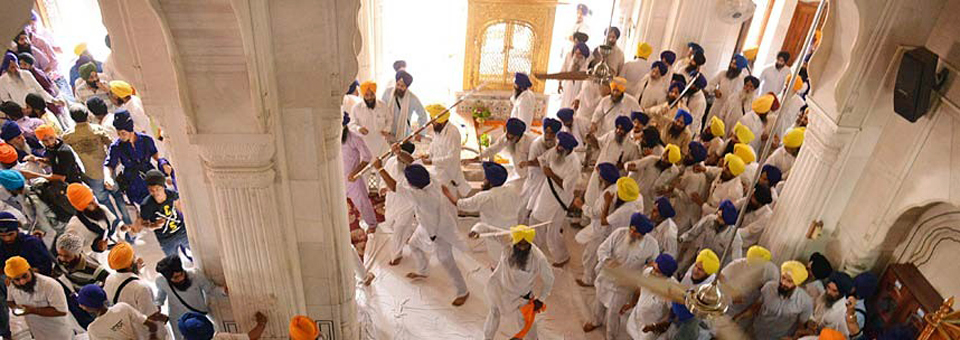There is a video that is presently circulating on social media and whatsapp that shows a fight taking place in a Gurdwara in Turlock, California. The fight is broken up by the Police and was yet again purportedly between two rival groups who want exclusive control of the institution. Yet another Gurdwara squabble-video you might think – why publicise it further by writing about it? Good question; because every time video or imagery of this sort emerges, the great and the good lament what took place, the internet is filled with condemnation and nothing is actually done to consider what has taken place, why, and most importantly how it can be prevented for the future.
A link to the video in question won’t be shared here; I have no interest in this latest incident or any other similar occurrence of itself. Funnily enough, I spoke at a Gurmat Camp at Turlock Gurdwara in 2004 when it was a humbler institution. I haven’t had the opportunity to go back since, but like many other Gurdware across the United States in particular, it has grown immensely in size thanks in no small part to the increasing monetary wealth at the disposal of its congregation. Whilst some Sikhs might then logically opine that money is at the root of this ‘in-fighting’, I would argue that it is not.
We have to look deeper at the confrontations that are taking place in our Gurdware, particularly here in the West. What we see in these fights are eruptions of protestation that take an aggressive form, a boiling-over of temperaments if you will. The causes for concern that lead to such aggression are opposition to the actions of others within the same Gurdwara, which in my opinion range from the preposterously insignificant to the considerably minor; make no mistake, there is nothing that has been done in any Gurdwara here that is remotely close to the heinous crimes that were being committed upon the sangat a hundred years ago which led to the reform movement of that era. So why the need for physical confrontation?
I contend that this Gurdwara fight and others are indicative of a malaise that will only be resolved when it is recognised, accepted and then appropriately tackled; they are the result of the enslaved collective Sikh psyche. Sad as it is to say, this is the only battleground that remains where Sikhs can at least feel that they are asserting control over their future. These squabbles are neither about exclusively controlling a Gurdwara (for better or worse), nor indeed the differences of opinion that caused any incidents leading up to the fight. They are the outpourings of pent-up frustration that has festered for seventy years and has piggy-backed with us across continents. Our reluctance to acknowledge that we no longer have a say in the direction that our Panth is taking is now taking the form of fighting one another for the scraps that we might believe can still save our ‘future’.
I raised this present incident with one of my closest confidantes who retorted that “Sikhs will fight anywhere, that isn’t the issue here”. True words, perhaps unintentionally so! Of course Sikhs don’t fight everywhere, but when repeatedly pushed to the brink, perhaps Sikhs will fight anywhere. These are fights to attain some – perhaps any – control over our way of life which is being misled at the highest levels of leadership. The problem is that the vast majority of Sikhs have not yet accepted that we are enslaved, that we are a people without direction, without statehood, without freedom. And yet we know that something is grossly wrong; we feel it deeply in the pit of our stomach and when an opportunity arises to take control of something ‘Sikh’ before us, we fight tooth and nail to cling on to it.
We need a lengthy conversation on what the Gurdwara is, what it means to us and how we want it to look. We have to accept that there will be major differences of opinion in such an audacious challenge, but salvation does not come without difficulty. Little that is being done today on any front is furthering this conversation from taking place, let alone drawing the link as I have. I hope with this article and future publications and productions at naujawani that we will not similarly falter.




